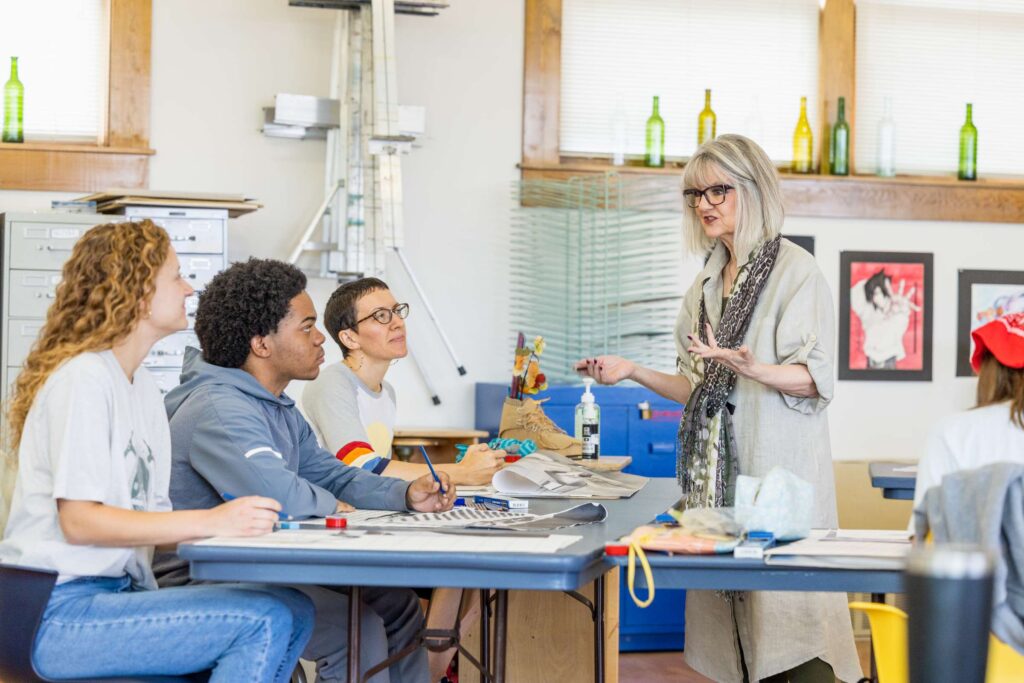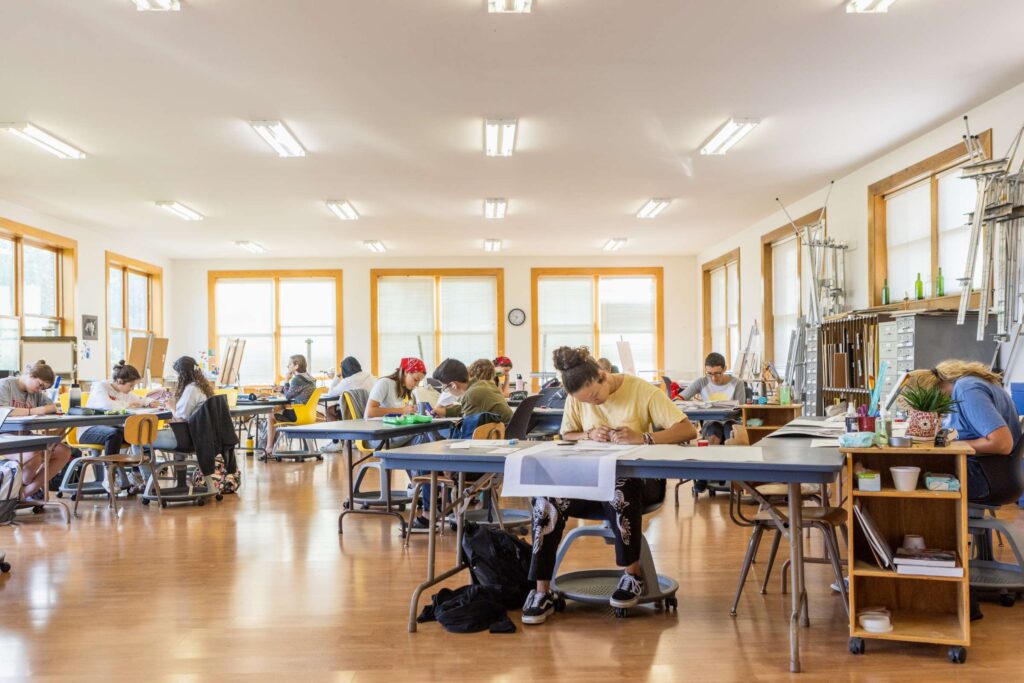
Faculty Blog: The Difference Between Art and Design

A Faculty Blog by Aaron Winey
The terms “art” and “design” are often used interchangeably. Although these terms go hand-in-hand, there is a difference between them. As an artist and designer myself, I’ve wrestled with the difference between art and design, and this topic comes up frequently in the classes I teach. So, what is the difference between art and design? It’s not a clear-cut answer — but here are some of my thoughts on the matter.
The Difference Between Art and Design
The difference between art and design is complicated. Design can be devoid of art, but the best designs have an artistic point of view. There is also art that has a design point of view. It’s sort of like a Venn diagram. Yes, there is art outside of design and design outside of art, but when the two worlds come together, that is the ideal. A design that doesn’t have an artistic eye is stagnant and boring; it’s the artistic part of design that engages and pulls people in. In other words, the difference between art and design is very gray, and it’s an ongoing discussion. The debate of art vs design is more on the philosophical side, but it is fun to think about.
The Importance of Community in the Life of an Artist
As an artist, community should play an important role in your pursuits. In classes, we talk about not just being a designer but participating in design. From social media graphics to choosing a typeface for a post, anybody can be a designer with the tools available now. But what differentiates educated designers from everyday designers?
To me, the difference is participating in design, and some of that participation is being in community. It’s not just being in community to find a sense of belonging, but to be inspired, exchange knowledge, share tricks with programs, and explore other designers’ work. Every artistic movement in history is created by a collective. Some names are more prominent, but these collectives are crucial because ideas get passed down, and it’s important to have that inspiration and push forward, especially in such a subjective practice.

Developing Artists at Grace
We develop a community of artists at Grace by creating consistent classroom spaces for students to meet. We have modular tables that model the professional world and are conducive to working in groups to pass knowledge between each other and to have a space to belong. The act of creating is a vulnerable and scary act, so the more comfort and security we can provide to our students through their surroundings and the people they’re with, the more we can facilitate creativity.
We hope that this cohort model doesn’t just stay here at school but goes beyond that. I know some Grace College art cohorts stay in touch, share work, and encourage each other long after they graduate. And on a personal level, the classmates I had at Grace are now my guest speakers for courses. The cohort that is established at Grace, but then becomes a lifelong community, is very powerful and enriches the life of the artist.
There is some overlap in the debate of art vs. design. But if you are a serious artist or designer, I hope that community is important to you. If you’re looking for a community of peer artists, check out Grace College’s visual art programs and explore recent art news at Grace.
Aaron Winey is an assistant professor of visual communication at Grace College, program director of visual arts, and a Grace alumnus. He holds a B.S. from Grace College and an M.F.A. from Vermont College of Fine Arts. Winey owns his own agency, Blue Note, through which he has designed more than 150 logos and more than 50 identity systems.
